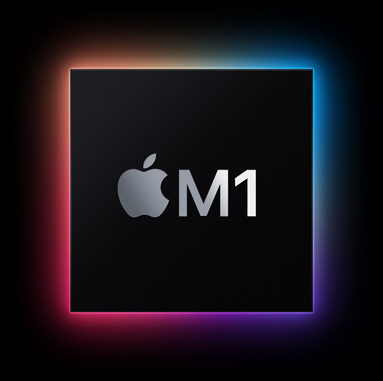
The announcement of a new personal computer is rarely a big deal. In most cases, new laptops are perhaps a little faster, a little lighter and have a tad more battery life than their predecessor. But the three new PCs that Apple announced on Tuesday — two laptops and a desktop — are using a new Apple-designed chip that the company is billing as a game changer.
The business angle is that Apple is not using Intel processors for the new Macs, but is equipping them with a new Apple-designed M1 chip. Previous Macs and most Windows PCs use Intel processors or ones from other companies that are very similar to those from Intel. Although Apple has long been using its own processors in its iPhones and iPads, it’s the first time it’s used an in-house processor for a Mac. Prior to adopting the Intel processor in 2006, it used PowerPC processors from IBM.
Apple’s departure from Intel will have a small impact on the chipmaker’s bottom line, but it could set a precedent for other PC makers who might follow Apple’s example of using processors with technologies that are similar to the one developed by Apple.
Arm chip technology
Apple’s new M1 chip is based on Arm — a technology developed by British company Arm Technologies. Arm Technologies doesn’t make chips but licenses its technologies to other companies. Chipmaker Qualcomm is using Arm technologies in some of its chips and Microsoft has already released at least one PC, the Surface Pro X, with a Qualcomm produced Arm processor. Other PC makers are likely to follow Apple and Microsoft’s lead with new Arm-based machines in the coming years.
The advantages to Arm processors is that they are typically smaller, more energy-efficient, faster and less expensive than so-called “X-86” processors such as those that have powered most PCs and Macs for many years.
Again, I haven’t tested the new Macs, but Apple claims that the M1 chips are a “giant leap,” with “revolutionary power efficiency.” One big advantage is integration. A single M1 chip includes the CPU (central processor), the GPU (graphic processor) DRAM (dynamic random access memory) and other functions that typically require separate chips or groups of chips. Apple claims that the new chip produces 3.9 times faster video processing and 7.1 times faster image processing in addition to other performance improvements. Having multiple tasks performed by a single chip can increase both performance and energy efficiency for a number of reasons, including the fact that data doesn’t have to travel between chips. This may be a crude analogy but it’s like having a factory, distribution warehouse and retail outlet in a single building.
I feel the same way about cars. When I bought my Tesla Model 3 in 2018, I could have spent thousands more for a car that went from 0-60 in just over 3 seconds or topped out at more than 160 MPH, but I was more than happy with the slower model that topped out at only 140 MPH with the ability to accelerate more than fast enough to scare and annoy my passengers. If I ever become a race car driver, I might reconsider that decision. What I really cared about was battery life (range) and that’s what I care about in a laptop, too.
Battery life is a big deal
While speed improvement may not change many lives, energy efficiency will. Since the pandemic started, I’m rarely far from an electrical outlet, but — back when I was traveling, attending conferences, or even out for the day, battery life was very important. One of the things I loved about the previous Macbook Air computers and recent laptops from other makers, is the ability to get through a cross-country flight without having to charge the battery. If Apple’s energy claims are true, users may be able to travel most of the way from Los Angeles to Singapore (nearly 18 hours) on a single charge. Apple claims that its Macbook Air will get up to 15 hours of wireless web browsing and 18 hours of movie playback. The new MacBook Pro 13-inch is rated at 17 hours of wireless web browsing and 20 hours of movie playback. As with all laptops, these are just estimates, which rarely pan out in real-life situations. I don’t know how these will do in actual use, but I typically get somewhat less performance than PC makers advertise. Still, if these PCs come even close, it’s a big improvement over current Mac laptops.
The Macbook Air starts at $999, the Macbook Pro 13-inch starts at $1,299 and the new Mac Mini with the M1 chips is $699. If someone in your household is a student or educator, you can save up to $100 with Apple’s education pricing.